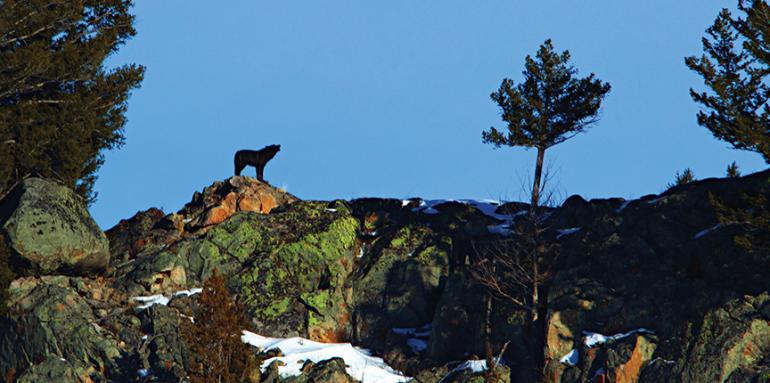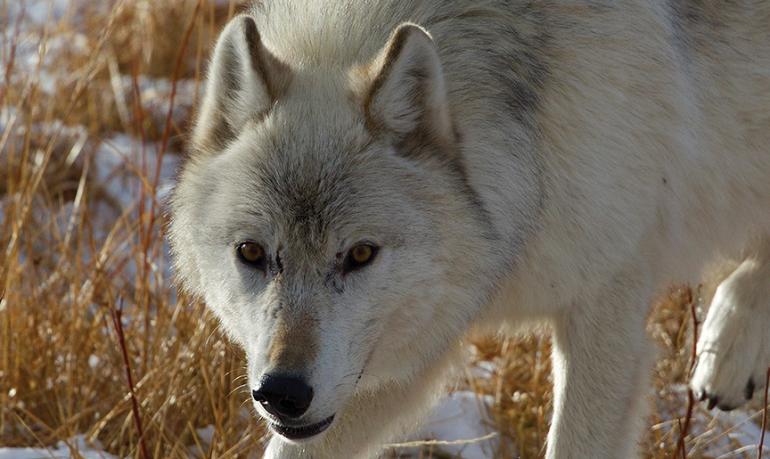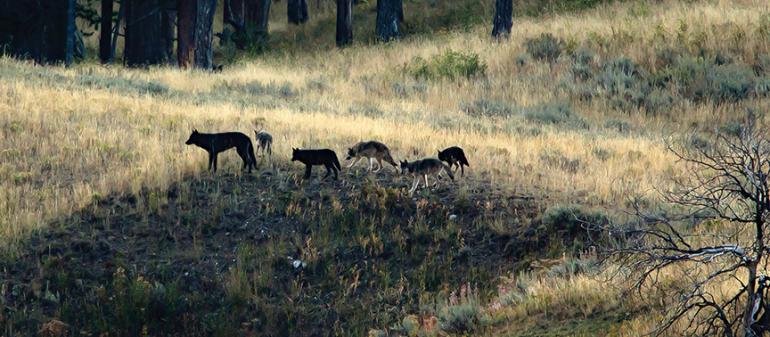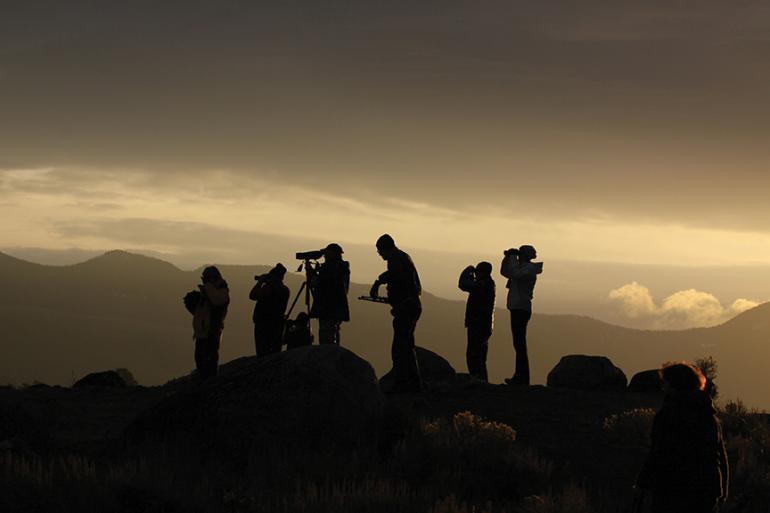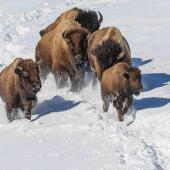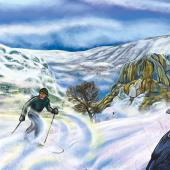Song of the Lamar
Tuning in to Yellowstone’s wolves.
The alarm shrills in the frigid morning air. I work my way, hands first like a mole, from the synthetic tunnel of my sleeping bag, and poke my head out of the tent. The moon has vanished, and the only light comes from the pinpricks of November stars. Overhead winks Orion, the hunter who in Greek mythology was punished for claiming he could, and would, kill all the animals on Earth.
In blackness and temperatures in the teens, we stuff our sleeping bags, haphazardly roll Al’s tent into a prickly bundle of nylon and stakes, and fling it all into my car. We slip out of the Mammoth campground, and begin the drive into Yellowstone’s Lamar Valley. Like many pilgrims to this place, we’ve come to see the wolves.
In 1995, the year of wolf-reintroduction into Yellowstone National Park, I was eight years old. I saved my allowance and “adopted” one of these reintroduced canids. He had a name, which I’ve forgotten, and the Park sent me sporadic updates and photos of him. At the time, I knew nothing about the bitter politics behind the reintroduction, nothing about trophic cascades, and nothing about the long and bloody war on wolves. I just knew that something about them, their presence out there, made my small heart spark and slap around like a livewire in my ribcage.
In her book, Eating Stone, Montana-born writer Ellen Meloy recounts a year spent in the Utah desert tracking bighorn sheep, pondering the importance of animals to the human spirit. Our minds, she reminds us, evolved alongside theirs. Our intelligence, our sense of consciousness, was engineered by what surrounded us, and in the days of our brains’ formulation, what surrounded us would have been the wilderness, and the beasts that inhabited it with us.
Meloy writes, “We think, abstractly, that they live out there somewhere… that we are keeping them among us by the sheer force of our desire, even as we consume, insatiably, the places where they live.” But despite this perception, these animals, “no longer figure in our lives. Our distance from them… has left us with the anguish of missing the wild that is no longer in ourselves.”
The road to Lamar is windy. Pale meadows spread from my headlights, and peaks rear their heads in the dimness. The brown ridgelines of bison backsides appear, steaming. Though I am tingling with anticipation, I drive slowly. They also like roads, the bison, and cross them unhurriedly. An appropriate response, where only a human generation or two after the bison’s near-extirpation, tourists come in swarms to gawk and shoot pictures.
We enter Lamar, the river stitching its invisible thread along the valley’s edge, and stop at each pullout to glass the landscape and listen. If our freezing breath could crackle, as it seems it should, that would be the only sound. We see nothing. I am trying to embrace just the expanse of the view, the seeping dawn light. I don’t want to let on how disappointed I will be if we don’t see them.
John Muir, in one of his darker moments (he was usually more upbeat), wrote, “Most people are on the world, not in it; have no conscious sympathy or relationship to anything about them; undiffused, separate, and rigidly alone like marbles of polished stone, touching but separate.”
Light is growing in the valley; the sun threatens to vault from the ridges, but we’ve spotted an SUV with a tall, quavering antennae. That means Park naturalists, tracking the wolves with radio signals. We pull over and clamber up the bank to where the researchers are standing with radio and scopes. The wolves are here, they confirm. There’s a signal, but they’ve also heard howling. I shiver.
We wait, and before long a black wolf lopes from the treeline. He stretches, drops his belly to the frost-covered ground. I think of my adopted wolf, and whether any of these wolves might be his descendants. I want to squeal, but I keep quiet, raise the binoculars to my face. When I can pull them away, I put my arms around Al, nearly spilling the coffee he’s carefully prepared on his tiny camp stove, and lift him off the ground. I feel eight years old. Why is it that we ascribe this kind of pure wonder-joy so uniquely to children?
"These animals, 'no longer figure in our lives. Our distance from them… has left us with the anguish of missing the wild that is no longer in ourselves.'”
More wolves appear until a total of seven range about beneath the pines, sniffing one another, napping, doing their downward-facing dogs. More people arrive, too. We are quiet, puffy in cold-weather gear, gripping thermoses in our mittened hands. Some have come from far away to see this. Many have high-tech scopes as long as my arm and three times as thick, which they offer to share. Most of the wolves are a rich black, a few gravelly gray. There is one white one, who seems particularly appreciative, as we observers are, for the morning sun.
And then they begin to sing.
I can only believe that Meloy and Muir, and others who have argued that our separation from the natural world is a hazard to the soul, were on to something. Surely the biodiversity losses that we face, and perpetuate, threaten the planet, its wildlife, but also our imaginations, our capacity for empathy, and even our communities. “Peering into the lives of creatures not similarly deprived soothes some of this emptiness,” Meloy writes. “Attention… may be the spark that rekindles imagination. It may save a listless mind.”
We stand in the chilly Lamar Valley for some time. The wolves sing together only once, and eventually, disappear back into the woods. But for the moment, it is good to watch and listen there, among this group of quiet humans who are glad to see room made for the needs of creatures other than us, who seem, out of this longing, a little less separate.
A man from Billings, who has shared his high-powered scope with us, lifts up his small daughter to its lens. “Can you see their gold eyes?” he asks her. She nods, her pink-booted feet dancing above the thawing ground.


